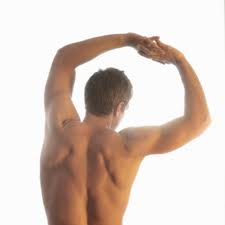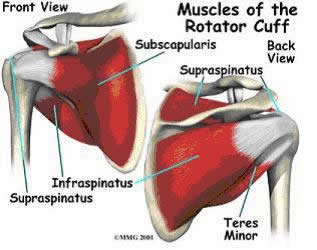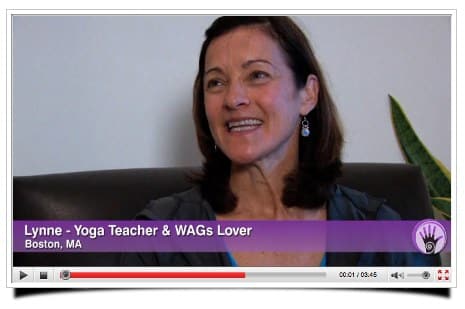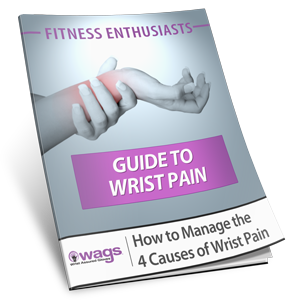
Shoulder injury treatment options will vary depending upon the type of injury and severity of symptoms. A professional diagnosis may be warranted to determine the extent of your injury. If a fracture, bone spur or rotator cuff tear is suspected an X-ray or MRI will be ordered. Seeking a comprehensive treatment plan from a qualified practitioner for anything more than mild shoulder pain is recommended.
Some traditional and alternative non-surgical treatment options may be beneficial.
Rest and Ice
This no fail method is tried and try. When you first feel pain ice and rest is recommended. Discontinue all movements that results in pain and try to completely rest the shoulder or move within your range of comfort. Ice the affected area to reduce inflammation several times daily for 10 minutes at a time. A bag of frozen peas drapes well over the shoulder or you can purchase a shoulder ice wrap to cover a larger area. Ignoring shoulder pain will only exacerbate the symptoms and can gradually cause more pain and damage to the rotator cuff and shoulder joint capsule.
Check for Proper Alignment
A chiropractic assessment is good way to ensure that all bones from the wrist to the shoulder are properly aligned. Misalignments will cause inflammation and problems with the joint mechanics. If your carpal bones are off it can cause compression on the median nerve as well. Wrist misalignments can set off a chain reaction that leads to shoulder issues.
We typically think of median nerve compression affecting the hand such as in carpal tunnel syndrome; however, compression of the median nerve can also ‘shut down’ or compromise the nerve impulses to the shoulder muscles, since the nervous system is a closed loop system. If the large shoulder muscles only function at ~20% strength this puts a great deal of strain on the smaller rotator cuff muscles. It causes biomechanical problems and may lead to rotator cuff tears.
A word of caution to yogis and fitness enthusiasts… It doesn’t take a fall on the hand to misalign the carpal bones and compress the median nerve. Repetitive weight bearing on the hands can overstretch the wrist ligaments, shift the carpal bones and have the same effect. Just be aware that shoulder injuries can result from wrist problems.

Immobilize
Bracing for immobilization can accelerate healing of injured ligaments or tendons. Immobilization should only be a short term solution, since prolonged bracing can result in joint stiffness, weaken muscles and loss of motion. There are various kind of braces for the shoulder, elbow and wrist depending upon where your paid is.
Myofascial Release
Fascia is dense fibrous tissue that covers and connects ours muscles, bones, nerves, blood vessels and organs. Like a web, the fascial system is one continuous structure that exists from head to toe without interruption. Myofascial release is an effective hands-on technique applying sustained pressure to release the connective tissue restrictions to restore movement and eliminate pain.
Reiki & Gua-Sha
Reiki is a Japanese technique for stress reduction and relaxation that also promotes healing. It is based on the idea that if one’s “life force energy” is low, then we are more likely to get sick or feel stress, and if it is high, we are more capable of being happy and healthy. It’s safe, relaxing and works in conjunction with all other medical or therapeutic techniques to promote recovery.
Gua sha, an ancient medical treatment, means literally “to scrape away disease” and promotes “Qi”or vital life energy. Gua sha or friction stroking with a smooth edge such as soup spoon is placed against the skin surface, pressed down firmly, and then moved down the muscles. This moves stagnated blood and energy promoting normal circulation and metabolic processes. Although the resulting red marks on the skin may look painful, they are not. Patients often feel immediate sense of relief.
A similar western version of gua sha is The Graston Technique® that incorporates patented stainless steel instruments to assist soft tissue mobilization. It works the same way – the area is stroked repeatedly with the tool.
Orthopedic Evaluation / MRI / Cortisone Injection
The pain accompanying an injured shoulder often results in lack of use and ‘guarding’ the arm to prevent bumping which can results in joint stiffness and loss of movement. If the diagnosis is Adhesive Capsulitis or frozen shoulder, daily activities can be significantly limited. A cortisone injection reduces the pain and inflammation so the affected arm can be used and motion gradually restored. The effects last for approximately 8 weeks. Typically a frozen shoulder takes 12 to 18 months to ‘thaw’ and fully regain movement. But this pain relief option can certainly help in the meantime.
Stretching and Strengthening
When the pain and inflammation have diminished gentle stretching and strengthening can begin. A great book Treat your own Shoulder by Robin McKenzie provides a graduated sequence for regaining shoulder motions in a safe pain free manner. An innovative tool for stretching the internal and external rotators is a plastic L shaped device called The Rotater. Going to a therapist (PT or OT) for your rehabilitation program is a good way to stretch and strengthen under some guidance.
A water exercise routine for gentle strengthening can also be effective. As strength and range of motion improve other activities within pain tolerance can be added. Always be mindful of just pushing to the point of discomfort, particularly with rotator cuff strains, and stopping any exercise or activity that result in pain.
Review
Shoulder injuries can be complex, take an extended time and multiple approaches to heal. Using both traditional and non-traditional treatments can provide a comprehensive approach to healing. Injuries are unique and should be evaluated by a healthcare practitioner to develop a therapy regime that is specific to the individuals needs and considers their lifestyle, work and leisure activities. If you’re also experiencing wrist pain during your exercises and need some wrist support for push-ups, check out our selection of workout gloves with wrist support.




